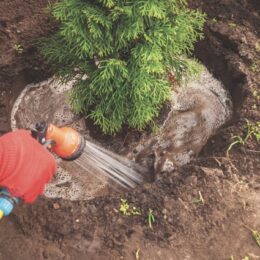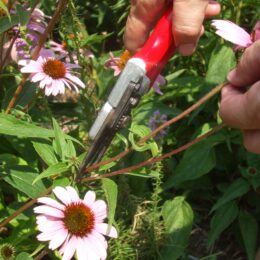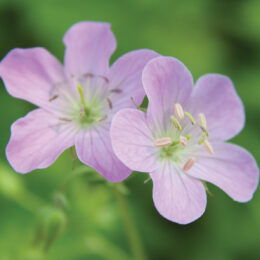What’s killing the oak trees?
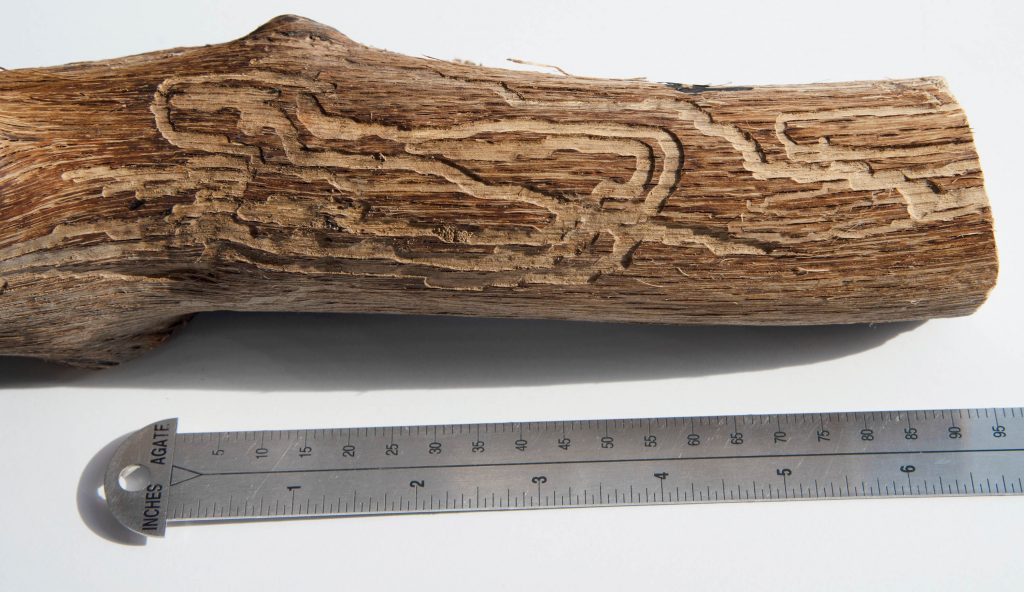
Q: In 22 years I’ve had more than a dozen oaks die because of a grub or larvae. Symptoms: First the leaves die and turn brown at the top of the tree. It slowly spreads down the tree until all the leaves are brown and have fallen off. Then the bark begins to peel away from the trunk, and then it falls off pieces at a time. You can see where it cuts off the water supply to the tree. It spreads from tree to tree, usually the closest to the one affected. It may be nine months total time before the tree dies. I’m sure this is spreading in the forest behind my house. — Eugene Pigula, DeMotte, Indiana
A: Our Purdue Entomology Specialist was able to identify the culprit as a longhorned beetle called red oak borer. The gallery pattern showing right angles and dead ends are distinctive for this species of borer. As with other kinds of borers, stressed trees are more likely to be attacked. By the time you’re seeing symptoms, it is too late to help that tree.
The best strategy is to protect trees not yet affected by alleviating stress as much as possible, such as irrigating during prolonged dry weather. Woodpeckers may provide some biological control, but they damage the bark and wood during their foraging. Remove dead and damaged trees to help reduce overwintering beetle population.
Bulbs can overcome way-too-early sprouting
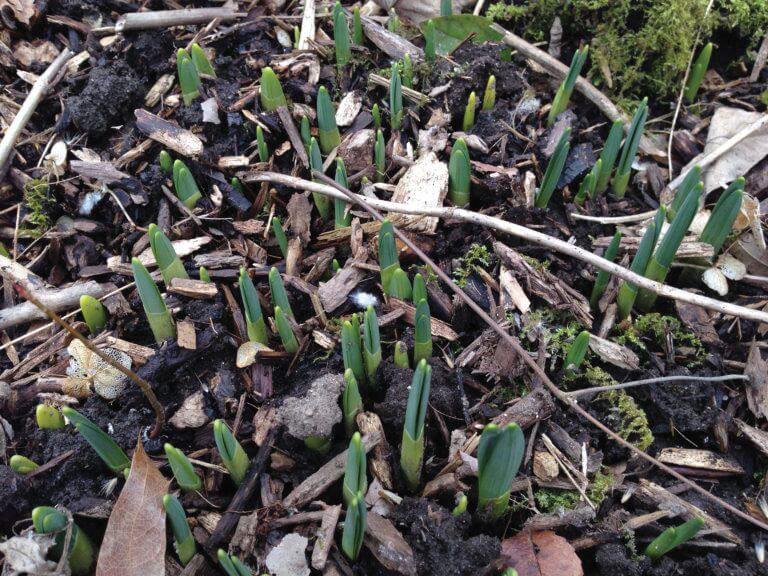
Q: In December’s mild weather, I found several bulbs sprouting in my garden. Then it got really cold again. Will my bulbs bloom this spring?
A: It’s not unusual for Indiana weather to have trouble deciding what season it is. Warm spells during the dormant period often lead to bulbs poking their foliage through the soil. Though we’re more used to seeing this happen during February warm spells, our frigid temperatures arrived a bit early in fall 2019.
Indiana temperatures widely fluctuated in November, December, and January. Low temperatures at the Purdue ACRE Farm in West Lafayette, for example, dropped to 3 F on Nov. 14, and rose back up into the 40s a week later. And the alternating pattern of below and above freezing continued through December and January.
There’s not much you can do about bulbs that have sprouted, but the good news is that in most cases, the bulb itself should still be well protected and should bloom as normal. The tips of the leaves may be brown from the freeze damage.
B. ROSIE LERNER is the Purdue Extension consumer horticulturist and is a consumer of Tipmont REMC. Questions about gardening issues may be sent to “Ask Rosie,” Indiana Connection, 8888 Keystone Crossing, Suite 1600, Indianapolis, IN 46240-4606, or use the form at IndianaConnection.org.

